Want to know more about the Best Biophysics Schools In the US and make an informed decision? Here is a good place to start.
The field of biophysics is a rapidly growing interdisciplinary area that combines the principles of physics and biology to understand the complexity of living systems.
In this blog post, we will explore some of the best biophysics schools in the US and how they mold biophysics professionals. This list of the best universities is for students interested in biophysics degree programs.
Please note that schools are selected based on our criteria (at the end of the article), ranked by the latest acceptance rate.
Table of Contents
#25. Iowa State University


- Acceptance rate: 89%
- Average entry score: 1010-1310 SAT or 21-28 ACT
- Student-to-faculty ratio: 19 to 1
- Estimated cost of attendance (tuition and fees): $37,128
- Average earning potential for graduates: $30,200 (College Simply)
Iowa State University’s (ISU) Biophysics Graduate Program is dedicated to the application of physical principles in understanding complex biological systems.
The program offers students a diverse and interdisciplinary curriculum, combining theoretical and experimental approaches. Students have access to state-of-the-art research facilities and work closely with experienced faculty members to develop their skills and knowledge.
This comprehensive education prepares graduates for successful careers in the biophysics profession, whether in academia, industry, or government research.
Source: Iowa State University
#24. Arizona State University

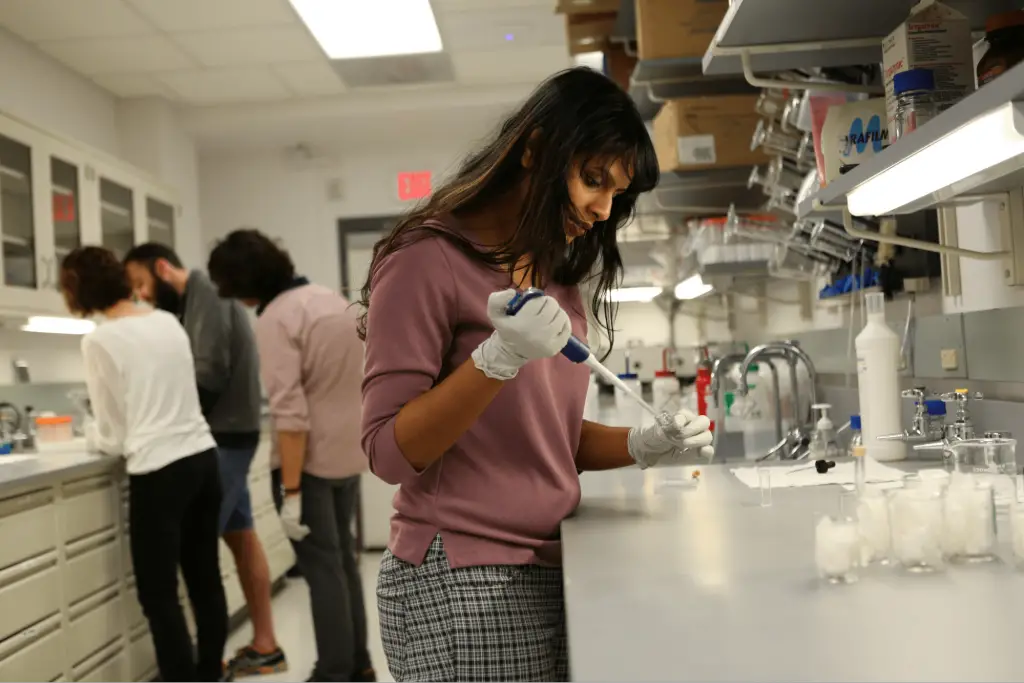
- Acceptance rate: 88%
- Average entry score: 1120-1180 SAT or 22-24 ACT
- Student-to-faculty ratio: 18 to 1
- Estimated cost of attendance (tuition and fees): $32,207
- Average earning potential for graduates: $30,770 (Grad Reports)
ASU’s Biophysics Program offers a diverse and interdisciplinary curriculum, combining the principles of physics, chemistry, and biology. The program encourages collaboration and provides students with access to cutting-edge research facilities, preparing them for successful careers in academia, industry, or government.
With a strong emphasis on problem-solving and critical thinking, students at this public university are exposed to a wide range of research areas, including molecular dynamics, protein folding, and biomolecular simulations, allowing them to develop a broad skillset that is highly valued in the biophysics field.
Source: ASU
#23. University of California San Francisco


- Acceptance rate: 71%
- Average entry score: 1230-1390 SAT or 27-31 ACT
- Student-to-faculty ratio: 18 to 1
- Estimated cost of attendance (tuition and fees): $75,232
- Average earning potential for graduates: $33,560 (College Factual)
The UCSF Biophysics Graduate Program offers students a strong foundation in the principles of biophysics while also providing opportunities for hands-on research experience.
With an emphasis on collaboration and interdisciplinary research, UCSF students are well-prepared to tackle complex biophysical problems. The program’s strong focus on mentorship ensures that students receive the guidance necessary to excel in their careers.
Source: UCSF
What’s it like to study at the University of California San Francisco?
#22. University of Wisconsin, Madison


- Acceptance rate: 60%
- Average entry score: 1300-1480 SAT or 28-32 ACT
- Student-to-faculty ratio: 18 to 1
- Estimated cost of attendance (tuition and fees): $55,372
- Average earning potential for graduates: $30,913 (College Factual)
The Biophysics program at UW-Madison emphasizes a strong foundation in the physical and biological sciences, ensuring students are well-equipped to tackle complex biophysical problems.
Students engage in interdisciplinary research projects and benefit from a supportive community of faculty and peers, fostering an environment conducive to academic growth and professional development.
With access to state-of-the-art facilities and resources, students in the UW-Madison Biophysics Graduate Program are poised to make significant contributions to the field of biophysics.
Source: UW-Madison
What’s it like to study at the University of Wisconsin Madison?
Similar articles like this:
- 25 Best Schools For Economics In The US
- 25 Best Schools For Biology In The US
- 25 Best Schools For English Language and Literature in the US
#21. University of Illinois at Urbana-Champaign


- Acceptance rate: 59%
- Average entry score: 1210-1470 SAT or 27-33 ACT
- Student-to-faculty ratio: 21 to 1
- Estimated cost of attendance (tuition and fees): $50,510
- Average earning potential for graduates: $26,400 (College Simply)
The Center for Biophysics and Quantitative Biology at UIUC offers a flexible and interdisciplinary graduate program. Students receive a strong foundation in biophysics and have the opportunity to work with renowned faculty on innovative research projects, developing the skills necessary to excel in the field.
The program offers a wide range of elective courses, allowing students to customize their education to fit their specific interests and goals. Additionally, students have access to world-class research facilities and resources, as well as numerous networking and professional development opportunities.
Source: University of Illinois at Urbana-Champaign
#20. University of Washington Seattle


- Acceptance rate: 54%
- Average entry score: 1220-1470 SAT or 29-34 ACT
- Student-to-faculty ratio: 9 to 1
- Estimated cost of attendance (tuition and fees): $58,470
- Average earning potential for graduates: $56,036 (ZipRecruiter)
The Biophysics, Structural, and Computational Biology (BSCB) Graduate Program at the University of Washington Seattle provides students with a strong foundation in biophysics, structural biology, and computational biology.
With a focus on quantitative approaches and interdisciplinary training, students gain the skills necessary to address challenging biological questions. The program’s collaborative environment and extensive research opportunities prepare graduates for successful careers in academia and industry.
Source: University of Washington Seattle
#19. University of California, San Diego


- Acceptance rate: 34%
- Average entry score: 1270-1480 SAT or 28-34 ACT
- Student-to-faculty ratio: 12 to 1
- Estimated cost of attendance (tuition and fees): $65,835
- Average earning potential for graduates: $43,000 (UC San Diego)
UC San Diego Biophysics focuses on quantitative approaches to understanding biological systems, setting it apart from other institutions. Students benefit from a strong emphasis on interdisciplinary research, a collaborative environment, and access to state-of-the-art facilities.
The program also offers numerous networking opportunities with leading researchers and professionals, allowing students to establish valuable connections that can propel their careers forward.
Source: UC San Diego
#18. University of Michigan Ann Arbor

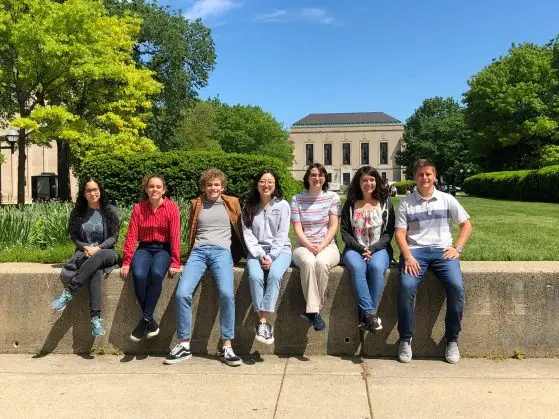
- Acceptance rate: 26%
- Average entry score: 1360-1530 SAT or 31-35 ACT
- Student-to-faculty ratio: 15 to 1
- Estimated cost of attendance (tuition and fees): $69,326
- Average earning potential for graduates: $24,623 (College Factual)
The University of Michigan Ann Arbor offers a top-notch Biophysics Graduate Program that emphasizes research and collaboration.
Students benefit from a diverse range of faculty expertise, state-of-the-art research facilities, and a strong commitment to mentoring. The program’s interdisciplinary approach prepares graduates for a wide range of careers in academia, industry, and government.
Source: University of Michigan
Similar articles like this:
#17. University of North Carolina at Chapel Hill


- Acceptance rate: 20%
- Average entry score: 1310-1500 SAT or 29-33 ACT
- Student-to-faculty ratio: 13 to 1
- Estimated cost of attendance (tuition and fees): $51,725
- Average earning potential for graduates: $ 30,700 (College Simply)
The Biophysics and Biophysical Chemistry (BBPC) Program at the University of North Carolina at Chapel Hill offers a rigorous and interdisciplinary curriculum that prepares students for careers in biophysics research.
Students benefit from access to world-class research facilities and a strong emphasis on collaboration between faculty members from diverse scientific backgrounds.
The BBPC program’s commitment to mentorship and professional development ensures that graduates are well-prepared for a wide range of career paths in biophysics.
Source: UNC BBSP
#16. University of California Berkeley


- Acceptance rate: 14%
- Average entry score: 1415 SAT
- Student-to-faculty ratio: 17 to 1
- Estimated cost of attendance (tuition and fees): $71,632
- Average earning potential for graduates: $36,294 (College Factual)
UC Berkeley’s Biophysics Graduate Program offers a diverse and interdisciplinary curriculum that prepares students for careers in academia, industry, or government.
The program emphasizes the importance of collaboration and communication skills, ensuring that students are well-equipped to tackle complex biophysical problems.
With access to state-of-the-art research facilities, students at UC Berkeley are well-prepared to make significant contributions to the field of biophysics.
Source: UC Berkeley
#15. University of California, Los Angeles


- Acceptance rate: 14%
- Average entry score: 1290-1520 SAT
- Student-to-faculty ratio: 18 to 1
- Estimated cost of attendance (tuition and fees): $31,949
- Average earning potential for graduates: $22,481 (College Factual)
At UCLA, the Biophysics Interdepartmental Graduate Program offers a unique interdisciplinary approach to the study of biological processes by combining expertise from various fields.
The program emphasizes collaborative research and provides students with access to cutting-edge facilities and resources, preparing them for successful careers in academia, industry, or government.
This comprehensive program encourages students to develop a deep understanding of biophysics and apply their knowledge to solve real-world problems.
Source: UCLA
#14. Emory University


- Acceptance rate: 13%
- Average entry score: 1420-1540 SAT or 32-34 ACT
- Student-to-faculty ratio: 9 to 1
- Estimated cost of attendance (tuition and fees): $75,594
- Average earning potential for graduates: $23,700 (College Factual)
Emory’s program in biophysics emphasizes the integration of physical and biological sciences. Students work closely with faculty on innovative research projects and benefit from a supportive and collaborative environment that fosters professional development.
In addition to rigorous coursework, students have access to cutting-edge research tools and techniques, as well as opportunities to present their research at national and international conferences, further enhancing their professional growth.
Source: Emory University
Similar articles like this:
#13. Georgetown University


- Acceptance rate: 12%
- Average entry score: 1380-1550 SAT or 31-35 ACT
- Student-to-faculty ratio: 11 to 1
- Estimated cost of attendance (tuition and fees): $78,754
- Average earning potential for graduates: $22,160 (College Factual)
Georgetown University’s Biological physics program provides a rigorous and interdisciplinary curriculum that emphasizes both theoretical and experimental approaches to understanding biological systems.
Students in the program work closely with renowned faculty on cutting-edge research projects, gaining valuable experience and developing the skills needed to excel in the field of biophysics.
The program’s collaborative environment fosters intellectual growth and the development of critical thinking skills, preparing students for successful careers in academia, industry, or governmental research institutions.
Source: Georgetown University
#12. Cornell University


- Acceptance rate: 11%
- Average entry score: 1450-1560 SAT or 33-35 ACT
- Student-to-faculty ratio: 9 to 1
- Estimated cost of attendance (tuition and fees): $78,992
- Average earning potential for graduates: $32,390 (College Factual)
Cornell’s Biophysics program provides students with a solid foundation in both the theoretical and experimental aspects of biophysics. The program emphasizes interdisciplinary research and collaboration, preparing students for a wide range of career opportunities in academia, industry, and government.
With a strong focus on quantitative approaches, students can tailor their coursework to meet their individual interests and needs, while benefiting from the expertise of renowned faculty and state-of-the-art research facilities.
Source: Cornell University
#11. Johns Hopkins University

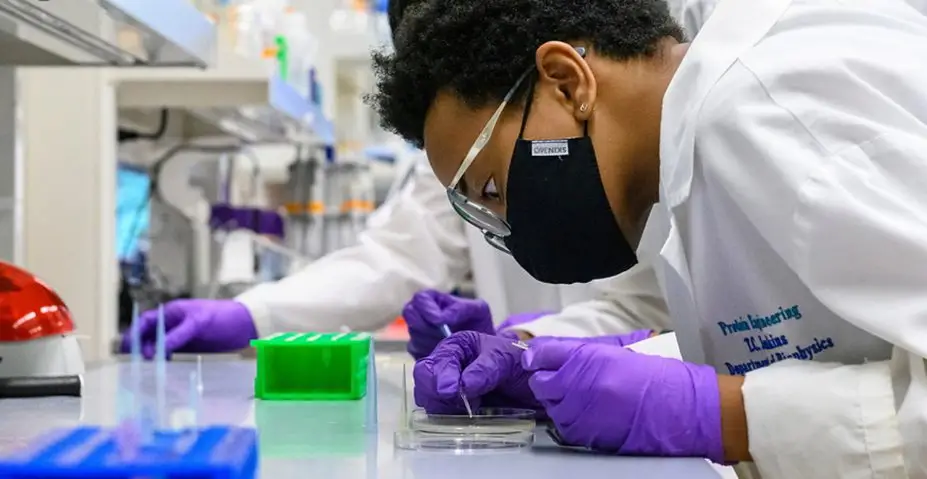
- Acceptance rate: 11%
- Average entry score: 1510-1570 SAT or 34-35 ACT
- Student-to-faculty ratio: 7 to 1
- Estimated cost of attendance (tuition and fees): $78,657
- Average earning potential for graduates: $47,146 (Glassdoor)
Johns Hopkins University’s Biophysics and Biophysical Chemistry Program offers a rigorous and interdisciplinary education that prepares students for successful careers in academia or industry.
Students have access to world-class research facilities and are encouraged to collaborate with faculty members on cutting-edge research projects. With a strong emphasis on communication and problem-solving skills, Johns Hopkins students are well-equipped to become leaders in the field of biophysics.
Source: The Johns Hopkins University
#10. Northwestern University
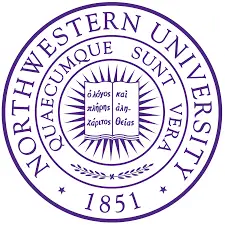
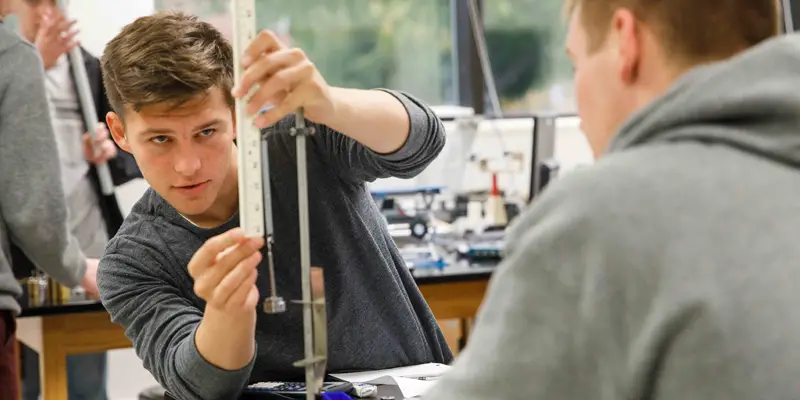
- Acceptance rate: 7%
- Average entry score: 1440-1550 SAT or 33-35 ACT
- Student-to-faculty ratio: 6 to 1
- Estimated cost of attendance (tuition and fees): $62,391
- Average earning potential for graduates: $59,600 (College Simply)
Northwestern University’s Integrated Graduate Program in Physical and Engineering Biology (IGPPEB) offers a unique interdisciplinary training experience that combines the strengths of the university’s top-ranked biological sciences, chemistry, and engineering programs.
Students receive hands-on training in cutting-edge experimental and computational techniques, preparing them for leadership roles in biophysics research. The IGPPEB program fosters a strong sense of community and collaboration, ensuring graduates are well-equipped to tackle complex scientific challenges.
Source: Northwestern University
Similar articles like this:
#9. University of Pennsylvania


- Acceptance rate: 6%
- Average entry score: 1460-1570 SAT or 33-35 ACT
- Student-to-faculty ratio: 7 to 1
- Estimated cost of attendance (tuition and fees): $65,790
- Average earning potential for graduates: $39,783 (College Factual)
The Department of Biochemistry and Biophysics at UPenn offers a unique and flexible curriculum that allows students to tailor their education to their specific interests and career goals.
With a strong focus on research and collaboration, students gain valuable experience working on cutting-edge projects, developing the skills needed to excel in the field.
UPenn’s program also emphasizes mentorship, providing students with personalized guidance from renowned faculty members and fostering a supportive community that encourages academic growth and professional development.
Source: University of Pennsylvania
What’s it like to study at the University of Pennsylvania?
#8. Brown University

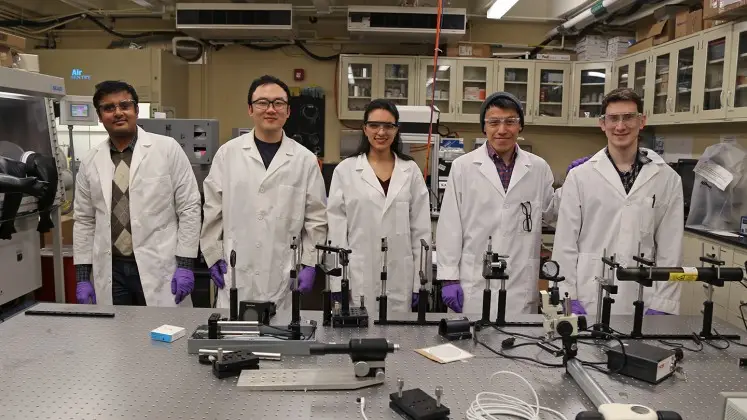
- Acceptance rate: 6%
- Average entry score: 1460-1570 SAT or 33-35 ACT
- Student-to-faculty ratio: 6 to 1
- Estimated cost of attendance (tuition and fees): $84,986
- Average earning potential for graduates: $29,060 (Grad Reports)
Brown University’s Department of Physics offers a unique biophysics training program that integrates biology, chemistry, and physics. Students have access to cutting-edge research opportunities and are encouraged to collaborate with faculty across disciplines.
This comprehensive training equips graduates with the skills and knowledge needed to tackle complex biological problems and drive innovation in the field of biophysics.
Source: Brown University
#7. Duke University

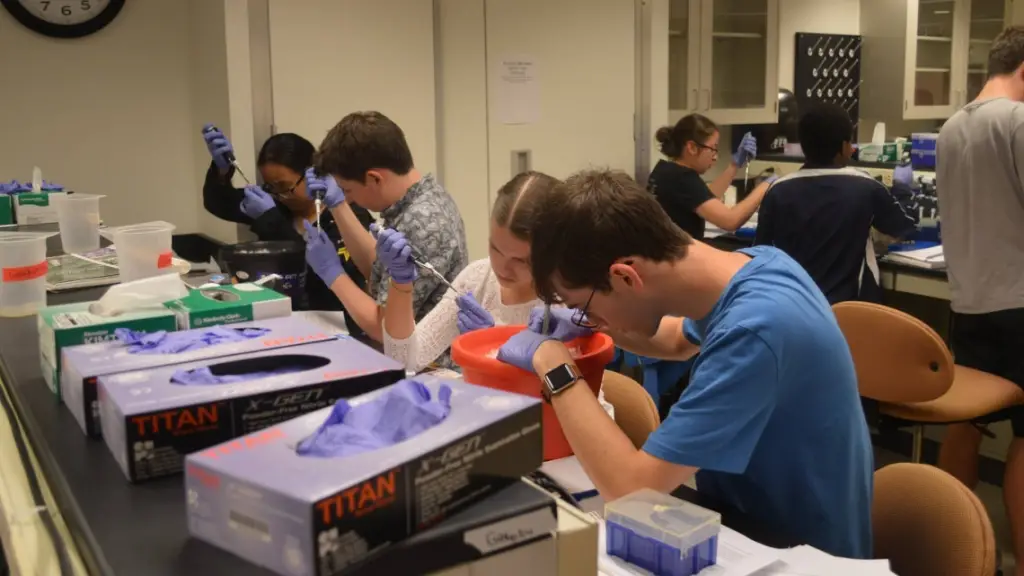
- Acceptance rate: 6%
- Average entry score: 1480-1570 SAT or 33-35 ACT
- Student-to-faculty ratio: 8 to 1
- Estimated cost of attendance (tuition and fees): $84,517
- Average earning potential for graduates: $20,909 (College Factual)
Duke’s Department of Biology and Physics offers a rigorous and comprehensive curriculum that combines theory and practice in an unparalleled learning experience.
Students work closely with esteemed faculty members on cutting-edge research projects, gaining valuable hands-on experience and developing the skills needed to excel as biophysics professionals.
The department fosters a supportive environment, encouraging collaboration and intellectual growth, ultimately preparing students for successful careers in academia, industry, or government research.
Source: Duke University
What’s it like to study at Duke University?
#6. Yale University


- Acceptance rate: 5%
- Average entry score: 33-35 ACT
- Student-to-faculty ratio: 6 to 1
- Estimated cost of attendance (tuition and fees): $84,525
- Average earning potential for graduates: $66,625 (College Factual)
Yale University’s Integrated Graduate Program in Physical and Engineering Biology (PEB) offers a unique interdisciplinary approach to biophysics education.
By combining elements of biology, physics, and engineering, students gain a comprehensive understanding of the field.
Yale’s commitment to fostering a supportive and collaborative environment ensures that students have the resources and mentorship necessary to thrive as biophysics professionals.
Source: Yale University
Similar articles like this:
- 25 Best Dental Schools In The US
- 25 Best Schools For Geology In The US
- 25 Best Schools For Marine Biology In The US
#5. Columbia University


- Acceptance rate: 4.1%
- Average entry score: 1440-1570 SAT or 34-35 ACT
- Student-to-faculty ratio: 6 to 1
- Estimated cost of attendance (tuition and fees): $85,000
- Average earning potential for graduates: $44,635 (Glassdoor)
Columbia University’s Integrated Program in Cellular, Molecular, and Biomedical Studies (CMBS) offers a unique interdisciplinary approach to biophysics education.
Students benefit from the expertise of faculty members in various fields, including biology, chemistry, physics, and engineering.
By fostering a strong community of scholars, Columbia ensures that students receive the support and mentorship necessary to excel in their careers as biophysics professionals.
Source: Columbia University
What’s it like to study at Columbia University?
#4. Harvard University


- Acceptance rate: 4%
- Average entry score: 1460-1580 SAT or 33-35 ACT
- Student-to-faculty ratio: 7 to 1
- Estimated cost of attendance (tuition and fees): $76,963
- Average earning potential for graduates: $43,328 (College Factual)
At Harvard University, the Graduate Program in Biophysics offers a comprehensive and interdisciplinary education in biophysics. Every biophysics major here are exposed to cutting-edge research and facilities, enhancing their skills and knowledge.
With a strong emphasis on collaboration, Harvard encourages students to work together and learn from one another, ensuring they become well-rounded biophysics professionals.
Source: Harvard Graduate School of Arts and Sciences
#3. Stanford University


- Acceptance rate: 4%
- Average entry score: 1470-1570 SAT or 34-35 ACT
- Student-to-faculty ratio: 5 to 1
- Estimated cost of attendance (tuition and fees): $78,898
- Average earning potential for graduates: $36,722 (College Factual)
Stanford University’s Biophysics Program is known for its interdisciplinary approach, combining elements of molecular biology, physics, and chemistry. Students benefit from the expertise of renowned faculty members who are actively engaged in research.
Stanford’s emphasis on fostering a strong community of scholars ensures that students receive the support and mentorship necessary to excel in their careers.
Source: Stanford Medicine
#2. California Institute of Technology
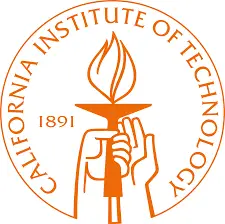
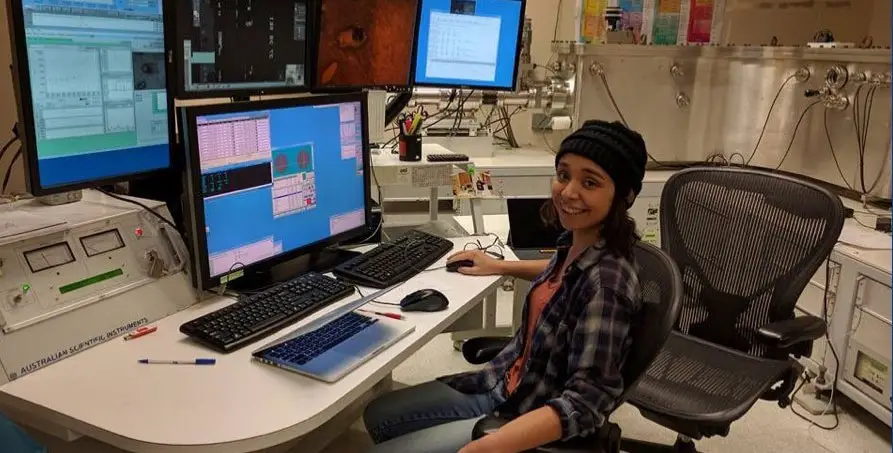
- Acceptance rate: 4%
- Average entry score: 1530-1560 SAT
- Student-to-faculty ratio: 3 to 1
- Estimated cost of attendance (tuition and fees): $83,598
- Average earning potential for graduates: $47,825 (Glassdoor)
The Biophysics degree program at Caltech emphasizes the importance of quantitative approaches and the development of advanced experimental techniques.
Students are encouraged to collaborate with faculty members on research projects, providing them with invaluable hands-on experience. Caltech’s small class sizes and close-knit community foster an environment where students can thrive and become leaders in the field of biophysics.
Source: Caltech
#1. Massachusetts Institute of Technology

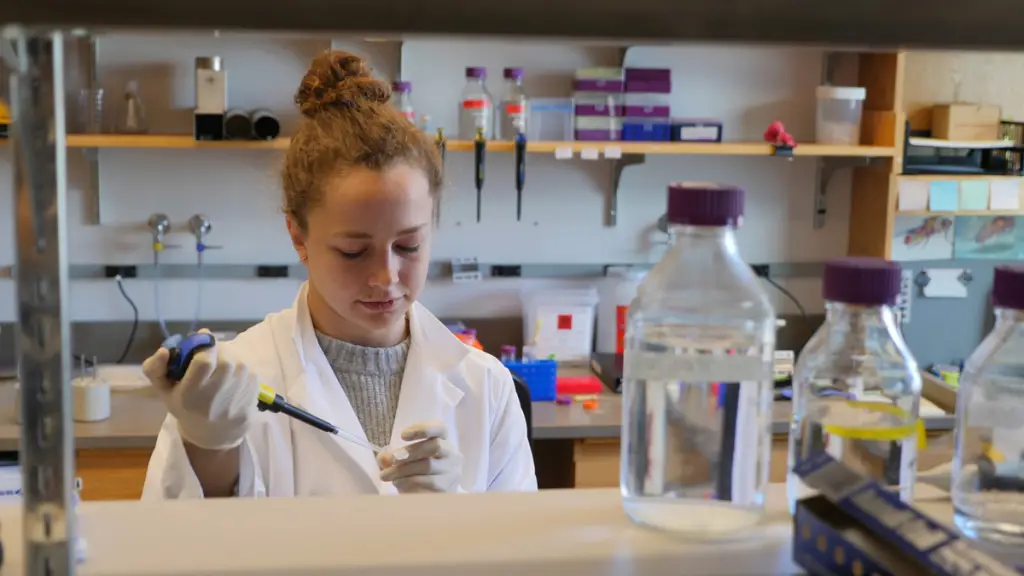
- Acceptance rate: 4%
- Average entry score: 1570 SAT or 36 ACT
- Student-to-faculty ratio: 3 to 1
- Estimated cost of attendance (tuition and fees): $77,570
- Average earning potential for graduates: $46,373 (College Factual)
MIT’s Biophysics program is designed to provide students with a rigorous foundation in both the theoretical and experimental aspects of the field.
The curriculum is interdisciplinary, drawing from the expertise of faculty members in biology, chemistry, physics, and engineering.
Students are encouraged to participate in cutting-edge research projects, ensuring they are well-prepared to excel in their future careers.
Source: MIT Biophysics
Conclusion
The world of biophysics offers countless opportunities for students who desire to explore the fascinating intersection of biology and physics.
The schools mentioned in this blog post are among the top institutions in the US, providing exceptional education, research facilities, and career prospects for aspiring biophysicists.
By considering the unique qualities and offerings of each school, students can make informed decisions and pave the way for a successful and rewarding career in biophysics.
Selection Criteria
Here is a list of the factors we considered when selecting the best colleges for biophysics.
Please note that the order in this list might vary by ranking criteria and sources.
- Reputation and ranking of the school: We looked for schools that have a strong reputation and high ranking in the field of biophysics.
- Faculty expertise, qualifications, and specialization: We researched the faculty members and their areas of expertise, and qualifications to ensure that the school has professors with relevant expertise and specialization in the areas of biophysics that are of interest.
- Curriculum and resources: We evaluated the curriculum to ensure it aligns with students’ interests and career goals and considered the quality of the school’s facilities and resources, such as labs, equipment, and libraries.
- Opportunities for hands-on learning and research: We looked for schools that provide opportunities for hands-on experience through internships, co-op programs, or fieldwork.
- Student support services and alumni network: We considered the availability of support services and the strength of the alumni network in providing mentorship, internships, and job opportunities after graduation.
- Extracurricular activities and diversity: We evaluated the availability of extracurricular activities and clubs that align with students’ interests and considered the school’s diversity and inclusivity.
- Networking and post-graduation support: We researched the school’s network of alumni and their post-graduation support for biophysics students, and also considered if the schools have a strong network of industry professionals and researchers in the field of biophysics.
Frequently Asked Questions
Q1. What are some of the best biophysics schools in the US?
Some of the top biophysics schools in the US include:
- Harvard University
- Massachusetts Institute of Technology (MIT)
- Stanford University
- University of California, San Francisco (UCSF)
- University of California, Berkeley (UCB)
- Johns Hopkins University
- University of California Davis
These schools are renowned for their excellent biophysics programs, world-class faculty, and state-of-the-art research facilities.
Q2. How can I choose the right biophysics program for me?
To choose the right biophysics program, consider the following factors:
- Research interests: Look for schools with faculty members and research groups that align with your interests in biophysics.
- Reputation and ranking: Research the school’s reputation and ranking in biophysics to ensure you are joining a well-regarded program.
- Location: Consider the location of the school and whether you would enjoy living in that area for the duration of your studies.
- Financial aid: Investigate the availability of scholarships, grants, and other financial aid options at each school.
- Alumni network: A strong alumni network can provide valuable connections and job opportunities after graduation.
Q3. What are some common research areas in biophysics?
Common research areas in biophysics include:
- Structural biology: Understanding the structure and function of biological macromolecules, such as proteins and nucleic acids.
- Cellular biophysics: Investigating the physical properties of cells and their components, including membrane dynamics and cellular mechanics.
- Molecular biophysics: Studying the physical interactions and processes that govern the behavior of molecules within living systems.
- Systems biology: Analyzing complex biological systems and their interactions at various scales, from molecular to organismal levels.
- Computational biophysics: Using computational methods and simulations to study biological systems and processes.
Q4. What are the typical admission requirements for biophysics programs?
Admission requirements for biophysics programs may vary between schools, but generally include:
- A bachelor’s degree in a related field, such as biology, physics, or chemistry
- A strong academic record, including a competitive GPA
- Standardized test scores, such as the GRE or MCAT
- Letters of recommendation from professors or mentors
- A statement of purpose outlining your research interests and career goals
- A CV or resume detailing your relevant experience and accomplishments
Q5. What career opportunities are available for biophysics graduates?
Graduates with a degree in biophysics can pursue a variety of career paths, including:
- Academic research: Conducting research at universities or research institutions
- Industry research: Working in pharmaceutical, biotechnology, or medical device companies
- Teaching: Educating future generations of biophysicists at the high school, college, or university level
- Government agencies: Contributing to public health and policy efforts at organizations like the National Institutes of Health (NIH) or the Food and Drug Administration (FDA)
- Consulting: Providing scientific expertise to clients in various industries
References
[1] Official Websites
[2] Salary Data from Glassdoor, College Factual; College Simply, Zippia
[3] Ranking references including news media such as Best Biophysics/Structural Biology Programs.


